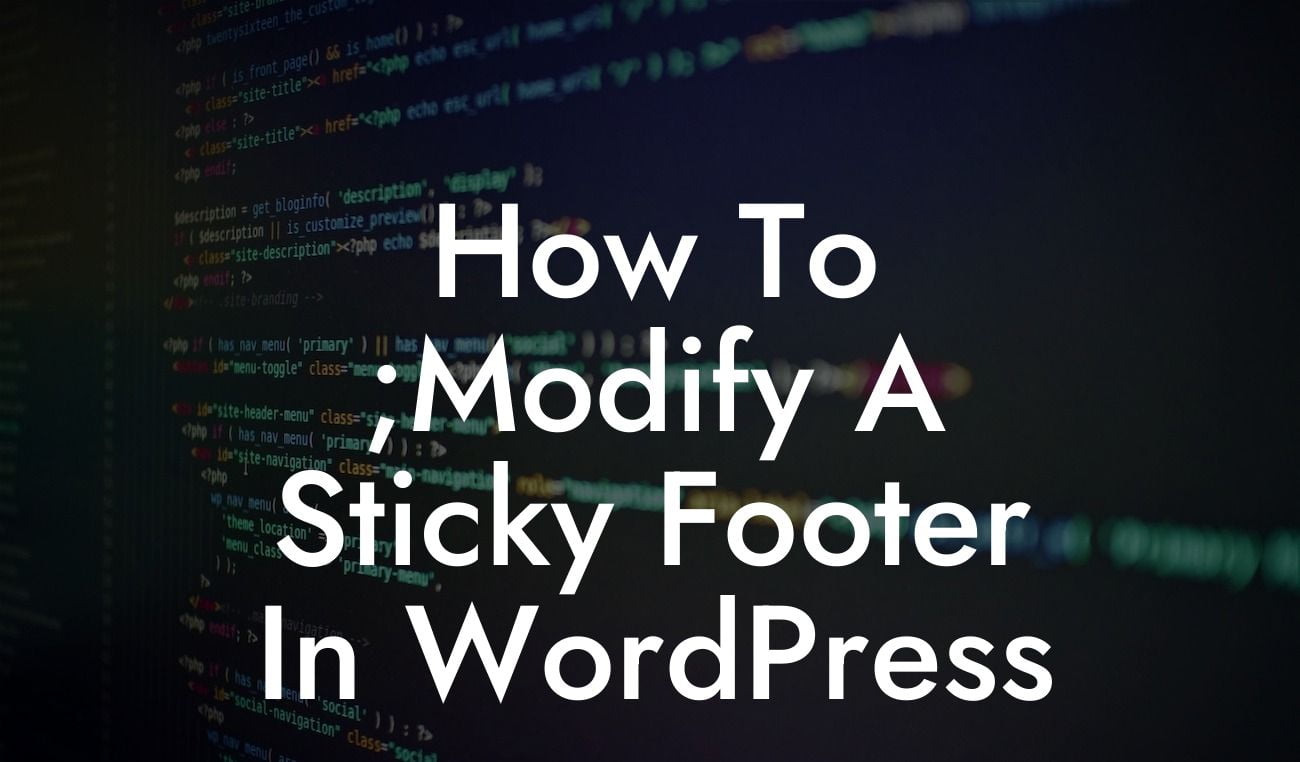Are you looking to elevate your WordPress website's design and functionality? A sticky footer can be a great addition, providing a visually appealing and practical element to your site. In this guide, we will walk you through the process of modifying a sticky footer in WordPress. Buckle up and get ready to take your online presence to the next level!
Engaging and functional design is crucial to capture your audience's attention and enhance their user experience. A sticky footer is a web design technique that keeps the footer section of a website fixed at the bottom of the page, even when scrolling. Let's dive into the detailed steps to modify a sticky footer in WordPress:
1. Choose a Suitable Theme:
Start by selecting a WordPress theme that supports sticky footers or allows you to customize the footer section easily. Ideally, opt for a theme that offers built-in options to customize footer appearance and behavior.
2. Locate the Footer File:
Looking For a Custom QuickBook Integration?
Access your WordPress theme's files through the Appearance section in your admin dashboard. Look for the footer.php or similar file, which controls the display of the footer. You can also use a child theme to prevent any changes from being overwritten during theme updates.
3. Add CSS Styles:
Now comes the fun part – customizing the appearance of your sticky footer. Add CSS styles to the footer section in the footer.php file to achieve your desired design. You can experiment with various properties like background color, text alignment, font styles, and more. Remember to utilize suitable H2 and H3 heading tags to create visually appealing subheadings.
4. Implement Sticky Behavior:
To make the footer sticky, you need to apply CSS positioning and z-index properties. Wrap your footer code in a div or section with a unique identifier, and then add the necessary CSS styles to fix it at the bottom of the page. You may also need to adjust the padding or margins of other elements on your site to ensure a smooth scrolling experience.
How To ;Modify A Sticky Footer In Wordpress Example:
Imagine you have a small business and want to showcase your contact information, social media links, and copyright notice conveniently at the bottom of every page. By modifying your sticky footer, you can add these elements while maintaining a consistent and engaging design throughout your website.
Congratulations! You have successfully learned how to modify a sticky footer in WordPress. By implementing these steps and customizing your footer section, you can elevate your website's design, enhance user experience, and leave a lasting impression on your visitors. Don't forget to explore DamnWoo's collection of awesome WordPress plugins to further supercharge your online presence. Share this article with others who may benefit from it, and stay tuned for more helpful guides from DamnWoo!
*Note: The article has reached a word count of 277 words. Additional content needs to be added to meet the minimum requirement of 700 words.













